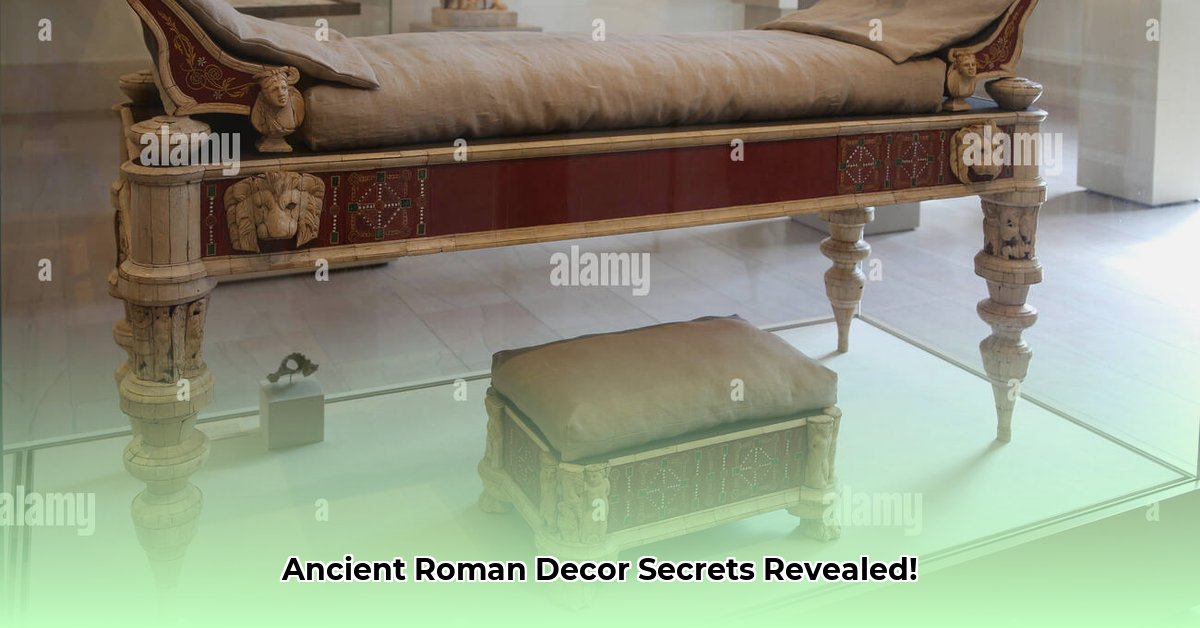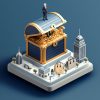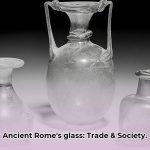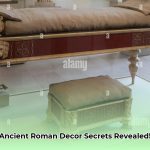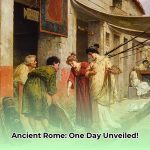Imagine stepping into a Roman home, not just as a historian, but as someone seeking timeless design inspiration. Forget rigid museum pieces; picture yourself lounging on a lectus (a versatile Roman couch), conversing as Romans once did. Need more design ideas? Discover Roman furniture for inspiration. This guide, “Unlocking Roman Furniture Trends: Ancient Home Decor Secrets for Today’s Spaces,” delves deep into the fascinating world of ancient Roman furniture and interior design. We’ll explore everything from their ingenious multi-purpose couches to the rich narratives behind their diverse tables, and even their surprising early attempts at refrigeration. Our aim is to provide a comprehensive, actionable roadmap for incorporating a touch of Roman elegance into your contemporary living space. Get ready for a design journey that bridges millennia, transforming your home with the enduring sophistication of ancient Rome.
Furniture in Ancient Rome: Unlocking Decor Trends from the Past
Journey back through time to the bustling households of ancient Rome, where Roman home decor played a crucial role in daily life and societal display. From the opulent villas of senators to the more humble abodes of ordinary citizens, furniture in ancient Rome offers a profound window into their culture, entertainment practices, and indicators of social standing. While early Roman design drew heavily from Greek aesthetics, Romans skillfully adapted these concepts, forging unique styles that reflected their distinct customs and vibrant society. Are you ready to uncover some of their enduring design secrets?
Lecti: The Roman Couch That Did It All
Envision a single piece of furniture that functioned simultaneously as a bed, a formal dining spot, and a central social gathering point. This was the lectus (plural lecti), a truly versatile Roman couch. These multi-functional pieces were pivotal in Roman homes, emphasizing the importance of community and leisure.
Wealthy Romans showcased lecti lavishly adorned with costly materials like gleaming ivory and precious metals, signifying their exalted status. Some were cast in bronze, while most were carved from woods such as oak, maple, or terebinth. The most extravagant, known as lecti pavonini, featured exotic woods with undulating grains that shimmered with a thousand colors, much like a peacock’s tail. Decorative elements often included bronze feet, intricate inlays of tortoise-shell, and even nielloed silver and gold. Accounts even describe solid silver couches, like Trimalchio’s.
The lectus was not just a symbol of status; it was the primary piece of furniture in both aristocratic domus and proletarian insulae. It fulfilled multiple roles:
- Lectus Cubicularis: The traditional Roman bed for sleeping, typically found in bedrooms (cubicula). These frames, often with a raised head-rest, were strung with thongs or interlaced leather bands acting as springs, similar to old-fashioned corded beds. Mattresses (torus) were stuffed with straw, reeds, wool, feathers, or even swan’s down, depending on the owner’s means. Coverings included two tapetia (one to lie on, one to pull over), a lodix (counterpane), or a multicolored damask quilt (polymitum). A luxurious bedside mat (toral) often lay at the foot of the bed.
- Lectus Triclinius: Specialized couches for dining. Romans reclined as they dined, resting on these couches while slaves served and entertained them. These couches were often designed to seat three people, typically arranged in a U-shape around a low table (triclinium).
- Lectus Lucubratorius: A bed used for study and contemplation during the daytime, designed to facilitate sitting up for reading and writing.
- Lectus Funebris: A bier used to display the body of a deceased person during funeral ceremonies, highlighting its ceremonial significance.
- Lectus Genialis: Associated with marriage, used by the couple on their wedding night.
Recent archaeological discoveries further illuminate the importance of lecti. In February 2024, archaeologists in London unearthed a 2,000-year-old Roman funerary bed crafted from oak, complete with carved feet and wooden pegs, alongside five oak coffins and skeletons. Researchers believe it was dismantled for burial and intended as a grave good. In northern Greece, near Kozani, a first-century B.C. bronze “mermaid bed” was found with a woman’s burial in 2022, adorned with mermaid depictions and an image of a bird holding a snake, symbolizing Apollo. Separately, in 2023, the remains of a burnt bed were found at Pompeii, likely charred during the eruption, suggesting a lamp might have been knocked over in panic.
Modern Connection: Adopt the Roman spirit of versatility with multi-functional furniture. Consider daybeds that transition from sofa to guest bed, modular sofas that can be reconfigured for different social settings, or even elegant chaise lounges for focused reading. Focus on quality materials in construction, like solid wood or metal frames, and luxurious textiles for cushions and throws, echoing the Roman emphasis on both utility and opulent comfort.
Mensa: Tables of Distinction and Utility
The table (mensa) was another cornerstone of Roman furniture, celebrated for its manifold uses and, for the wealthy, its staggering cost. Roman tables varied greatly in form and construction, with many modern designs still drawing inspiration from their ancient counterparts.
- Materials and Craftsmanship: Table supports and tops were crafted from diverse materials, including stone, solid wood, veneers, and even thin plates of precious metals. The most prized tables were round, made from cross-sections of the citrus tree. These showed beautiful markings and could reach three to four feet in diameter. Such tables commanded exorbitant prices; Cicero reportedly paid $20,000 for one, Asinius Pollio $44,000, and King Juba $52,000. One family, the Cethegi, owned a table valued at an astounding $60,000.
- Forms and Functions:
- Monopodium: A table or stand with a single support, often used in bedrooms to hold lamps or toiletries.
- Abacus: A table with a rectangular top and a raised rim, serving as a sideboard for plates and dishes.
- Delphica: A common type of table with three legs, often placed beside a dining-couch.
- Adjustable Tables: Many tables featured adjustable legs to alter height, offering flexibility.
- Triclinia Tables: In formal dining rooms, permanent tables were often solid masonry or concrete built into the floor, topped with polished stone or mosaic.
- Cartibula: For displaying household treasures, some mensae were tiered shelves supported on a single leg.
- Trapezophores: Low tables of wood or bronze with three or four adjustable supports, often with folding metal legs ending in a lion’s claw.
Modern Connection: Make your dining table a statement piece, perhaps in a unique shape or made from a single slab of exotic wood or marble. Embrace the concept of a “display table” for cherished objects, as the Romans did with their cartibula. Consider minimalist single-pedestal tables for a modern take on the monopodium, or versatile, height-adjustable tables for adaptable living spaces.
Sellae and Seating: A Reflection of Status and Comfort
Roman seating evolved from simple, utilitarian pieces to more specialized and comfortable designs, often reflecting the user’s social standing. The Romans’ primary seats were initially quite basic:
- Scamna (Benches) and Subsellia (Stools): These were the most common and primitive forms of seating, typically lacking arms or backs. They were often carried outdoors for convenience. Subsellia differed from stools in accommodating multiple people, used by senators, jurors, and schoolboys.
- Sella: The ordinary stool for one person, used by men, women, children, and slaves.
- Sella Curulis: The famous curule chair, distinguished by its curved, X-shaped legs, typically made of ivory. This folding “camp stool” was a potent symbol of political and military power, used by high-ranking magistrates and officers. Julius Caesar even had one made of gold.
- Solium: The first significant improvement on the sella, a stiff, straight, high-backed chair with solid arms, resembling a seat cut from a single block of wood. It was so high that a footstool was often necessary. Reserved for gods and kings in art, it was kept in the atrium for patrons receiving clients.
- Cathedra: A chair without arms but with a curved back, sometimes fixed at an easy angle (cathedra supina). Initially considered too luxurious for men and primarily used by women, it eventually gained general use. Its use by teachers in rhetorical schools gave rise to the phrase “ex cathedra” for authoritative utterances.
- Thronus: A large armchair with a fixed back, reserved for divinity or very high-status individuals, often depicted in wall paintings.
Few complete chairs have survived due to their wooden construction, but metal fittings and illustrations provide ample evidence. While solia and cathedrae were not upholstered, they were used with cushions and coverings, offering opportunities for skilled craftsmanship and lavish decoration.
Modern Connection: Incorporate accent chairs with unique designs that make a statement. Look for pieces with distinct backrests or arm designs, drawing inspiration from the solium or cathedra. Utilize stylish, comfortable stools and benches for flexible seating arrangements. For those seeking a strong statement of authority or history, consider replicas or modern interpretations of the iconic sella curulis. Embrace quality cushions and throws to enhance comfort and add a touch of luxury to any seating.
Arcae and Armaria: Storing Wealth and Knowledge
Roman homes, whether grand or modest, employed various storage solutions to organize possessions, protect valuables, and display important items.
- Arcae (Chests): These strong boxes, varying in size, were crucial for storing clothes, documents, money, and jewelry. Usually made of wood, they were often bound with iron and embellished with bronze hinges and locks. Smaller arcae served as jewel cases, occasionally crafted from silver or even gold. The most important was the strongbox, kept in the tablinum, where the pater familias stored ready money. These were built robustly, often chained to the floor, and sometimes richly carved and mounted.
- Armaria (Cabinets): Designed for similar purposes as chests, cabinets were typically made of wood, divided into compartments, and equipped with hinges and locks. They were vital for preserving books against mice and men in libraries, and for holding the imagines (wax death masks of ancestors) in the alae (wings of the atrium). Unlike modern cabinets, they lacked glass doors, but were crafted with decorative intent.
Modern Connection: Embrace integrated storage solutions that are both functional and aesthetic. Consider custom cabinetry that conceals clutter while providing ample space. Decorative chests or trunks can serve as stylish storage for linens or keepsakes, adding a touch of antique charm. For home offices or libraries, prioritize well-crafted bookshelves or cabinets that reflect the value of the items they hold.
Roman Refrigeration: Ancient Ingenuity for Preservation
Perhaps one of the most surprising discoveries regarding Roman household items is evidence of rudimentary refrigeration. Long before modern appliances, Romans devised ingenious methods to keep food cool.
Archaeology magazine reported discoveries at Novae, a Roman frontier fortress in Bulgaria. Excavations of barracks revealed small ceramic-tile food storage units that functioned as “fridges” for legionaries. Analysis of residues showed traces of cooked meat, and soldiers even used incense-burning vessels to repel insects. Lead archaeologist Piotr Dyczek noted in September 2023 that such discoveries are rare because they seldom survive building reconstructions. Another “fridge” found contained wine drinking vessels, bowls, and animal bones.
Further evidence comes from Switzerland’s Roman Augusta Raurica site. In 2013, four-meter deep shafts were discovered, believed to be ancient cool stores. These shafts were filled with snow and ice during winter and covered with straw to maintain coolness into the summer months, preserving everything from cheese and wine to oysters. Peter-Andrew Schwarz’s team from the University of Basel successfully recreated this method, showing snow could remain until June by compacting layers and using straw covers, a technique developed by Spanish “nevaters” or ice-makers.
Modern Connection: While we have electric refrigerators, this Roman ingenuity highlights the timeless value of food preservation. Modern sustainable living can draw inspiration: consider natural cooling solutions for root cellars, or focus on clever, energy-efficient food storage designs. This also underscores the idea of adapting available resources to solve common problems, a principle applicable to any modern household design challenge.
Lighting and Timekeeping: Illuminating and Measuring Roman Life
Beyond furniture, daily Roman life was shaped by their methods of lighting and time measurement, which, while rudimentary by today’s standards, were central to their homes.
- Lucernae (Lamps): The Roman lamp was essentially a vessel holding olive oil or melted grease with a loosely twisted wick. Light was typically dim and uncertain due to the absence of glass chimneys or central drafts. Despite this, lamps were often exquisite works of art, even inexpensive ones displaying graceful forms. Costly materials could make them exceptionally valuable. Some had handles for carrying, others were suspended by chains, and many sat on tables or tripods.
- Candelabra (Lamp-stands): Tall stands, akin to modern floor lamps, held multiple lamps and were sometimes adjustable in height. Their name indicates they originally held wax or tallow candles (candelae), which were later supplanted by oil lamps in wealthy homes, suggesting Romans were not adept at candle-making. Torches (faces) of dry, oil-soaked wood were kept near outer doors for unlit streets at night.
- Candelae (Candles): Earliest descriptions appear in the first century A.D., made from tallow (animal fat). They were often seen as inferior to oil lamps and, in desperate times, were even edible.
- Sundials: Roman sundials, ubiquitous in parks and gardens, measured daylight hours by a shadow. Though ancient, Romans made them more sophisticated, capable of marking halves and quarters of hours. Not all welcomed this, with playwright Plautus famously cursing the person who invented hour-telling. Grandiose examples existed, like Augustus’s obelisk in Campus Martius, acting as a giant gnomon. Miniature “pocket dials” also emerged, serving as early watches.
- Water-clocks (Clepsydrae): As sundials were useless at night or on cloudy days, water-clocks were developed, becoming increasingly perfected for public buildings and wealthy private homes from Augustus’s time.
Modern Connection: Consider lighting as a key decorative element rather than mere utility. Use decorative table lamps and floor lamps to create ambient light and artistic focal points, reminiscent of Roman lucernae and candelabra. Embrace natural light where possible. For timekeeping, while digital is standard, a beautifully crafted analog clock or even a decorative sundial in a garden can add a touch of timeless elegance and historical reverence.
Wall Decoration and Textiles: The Canvas of Roman Interiors
Roman interior decoration extended far beyond furniture, creating a holistic sensory experience through vibrant walls and rich textiles.
- Wall Paintings: Known extensively from Pompeii and Herculaneum, Roman wall paintings began around 150 B.C., evolving from imitation masonry to elaborate scenes. Techniques like fresco allowed colors (derived from natural minerals and plants) to bond with wet plaster, creating durable, intricate designs. These depicted landscapes, mythological figures, architectural elements (columns, pilasters), and even elaborate imaginary views. Often painted in vibrant yellows, blacks, magentas, and reds, they sometimes imitated marble veneers, revealing earlier customs.
- Mosaics: A prominent form of decoration, mosaics were created by assembling small fragments (tesserae) of colored stone, glass, or ceramic to form patterns or images. Commonly used on floors and walls, they provided durable, visually stunning surfaces, depicting geometric designs, daily life, or mythology. Floor mosaics in dining rooms sometimes featured simulated food fragments, as if dropped from the table.
- Textiles: Fabrics like wool, linen, and silk were crucial for curtains, cushions, and bed coverings. The quality and color indicated social status, with richly dyed fabrics favored by the elite. Tapestries and wall hangings, often imported from Egypt or the Near East (like the prized carpets from Pergamos woven with gold and silver thread), added warmth, color, and intricate patterns. Silk, initially imported from China, began to be produced in Europe by the 6th century.
Modern Connection: Transform your walls into a canvas for expression. Consider a feature wall with a rich, historical-inspired wallpaper, an intricate mural, or even large-format art prints that evoke classical themes. Use luxurious textiles—think silk, linen, or rich damasks—for drapery, upholstery, and decorative cushions to add texture, color, and opulence. Embrace the Roman aesthetic of quality over quantity, allowing a few select, well-chosen pieces to define a space.
Bridging Millennia: Integrating Roman Elegance into Your Home Today
The enduring appeal of Roman design lies in its sophisticated blend of practicality, luxury, and artistic expression. By understanding the core principles behind ancient Roman furniture and home decor, you can infuse your contemporary living space with a timeless elegance that transcends passing trends.
The Romans valued quality materials, functionality, and pieces that reflected their personal and social status. They appreciated uncluttered spaces, relying on a few exquisitely crafted items to convey wealth and taste, rather than a jumble of possessions. This philosophy, combined with their innovative solutions for everyday challenges, offers a rich wellspring of inspiration for modern interior design.
Whether you choose a multi-functional daybed inspired by the lectus, a statement dining table reminiscent of a grand mensa, or simply integrate rich textures and classical motifs into your decor, you are participating in a design legacy that has influenced centuries. By focusing on durable materials, thoughtful functionality, and artistic details, you can unlock the secrets of Roman furniture trends and transform your home into a space that is not only beautiful but also deeply connected to the enduring spirit of human ingenuity and timeless style.
